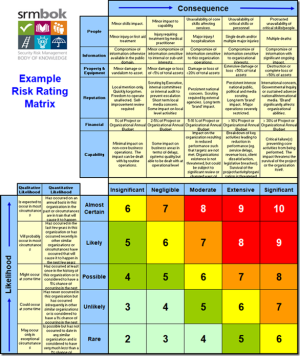Orthodox ergonomics has a focus on objects and how humans interact with objects. The classic text for orthodox ergonomics is Fitting the Task to The Human by Kroemer and Grandjean. Orthodox ergonomics is framed by a STEM-only worldview and looks at humans as ‘factors’ in a system and understands humans through technicist (Ellul) and mechanistic framing. Most orthodox texts on ergonomics read like maths-engineering texts full of tables, body size, machine dimensions, task design and body-machine interaction. Holistic Ergonomics approaches the nature of humans and work in a completely different way through the lens of Social Psychology.
Holistic Ergonomics takes off where orthodox ergonomics stops. Holistic ergonomics embraces a host of disciplines completely ignored by orthodox ergonomic studies. Holistic Ergonomics is informed by a transdisciplinary understanding of persons. Rather than viewing the human as a sub-set of a system in a machine-like way, Holistic Ergonomics understands humans ecologically as principle participants in how work is done. Humans don’t serve systems, systems serve humans.
The starting point for Holistic Ergonomics is thinking critically about an anthropo-centric focus on persons. The nature of what makes human ‘being’ and the phenomenological uniqueness of personhood should drive the way we tackle risks in work (ergo). A place to start is through an understanding of the human ‘self’ in order to tackle all things that are other than self. This is framed graphically in the Holistic Ergonomics symbol (Figure 1. Holistic Ergonomics Semiotic) that also serves as the symbol for the Centre for Leadership and Learning in Risk (https://cllr.com.au/). We can only truly be our ‘self’ (inner self) when we know how we relate to other ‘selves’ (social, cultural, environmental and transcendent selves).
Figure 1. Holistic Ergonomics Semiotic
A foundational text is by Taylor, C., (1992) Sources of the Self, The Making of the Modern Identity. After all, it is from our identity that our worldview emerges and from our methodology that we enact our approach to risk. One cannot separate a sense of identity without tackling one’s sense of ‘mind’ (not brain). Two other resources are: Kierkegaard Either/Or and Ricoeur Oneself as Another (but both very challenging to read).
One of the reasons why orthodox ergonomics is so limiting is because of a STEM-only worldview that frames the world through objects. A Transdisciplinary approach opens up the world of risk in ergonomics to new possibilities and understandings framed through an open understanding of selfhood and personhood (further see: The Social Psychology of Risk Handbook – https://www.humandymensions.com/product/the-social-psychology-of-risk-handbook/ ).
When we come as persons to work we need to frame the task through the lens of personhood and ecological relationships rather than the lens of hazards. Hazards are neither objective nor self-disclosing and are always interpreted through how people ‘see’ (worldview) the world. This is captured graphically in Figure 2. Holistic Ergonomics – The Task tool. The notion of One Brain and Three Minds is important here (https://vimeo.com/156926212). Of course, the STEM-only worldview works in denial of the ‘transcendent self’ limitationed by empiricism and positivism. However, it is in many things that transcend understanding that we find help, support and healing in the sufferings of fallibility (https://www.humandymensions.com/product/fallibility-risk-living-uncertainty/ ).
Figure 2. Holistic Ergonomics – The Task
A critical foundation for Holistic Ergonomics is an understanding of Interconnectivity and Interaffectivity (see Fuchs https://www.academia.edu/30974462/Intercorporeality_and_Interaffectivity). This is understood phenomenologically as ‘socialitie’. Our interconnection as selves interpenetrates each other not just via mirror ‘neurons’ but through the way humans embody experiences, this is the key to understanding empathy. We don’t so much ‘think’ for others in their suffering as much as we ‘feel’ for them in our heart and gut. We see this empathy in the way we connect with the victims of the current bushfires ravaging my country (https://usishield.com/26562/opinion/have-empathy-for-victims-of-wildfire/). This connection is felt in heartache and in our gut as we ‘imagine’ the suffering of others. This is also evidenced in the way humans embody trauma (Van Der Kolk, The Body Keeps the Score, Brain, Mind, and Body in the Healing of Trauma). The way we connect with others happens in the ‘mystery’ of the ‘we-space’ as is represented graphically by Figure 3. Interaffectivity of Risk tool.
Figure 3. Interaffectivity of Risk
I call this ‘mysterious’ because of the way context triggers and enacts affordances (response by design) through body (muscle) memory. As yet we know so little about how this ‘we-space’ triggers decision making.
By now the reader will realize that there is a new language required when thinking about Holistic Ergonomics. This is what happens when one leaves the comfort of STEM-only worldview and embraces other worldviews in other disciplines. When we undertake Holistic Ergonomic workshops ( https://cllr.com.au/product/holistic-ergonomics-unit-6/) we introduce participants to the Holistic Ergonomics Lexicon (Figure 4.)
Figure 4. Holistic Ergonomics Lexicon
In some ways new thinking (paradigms) require a new language such is the nature of Transdisciplinarity (https://safetyrisk.net/transdisciplinarity-and-worldviews-in-risk/). Transdisciplinarity (across disciplines) is not multidisciplinarity (a multiple of disciplines).
Once we acquire a new language for understanding ergonomics holistically we can then use tools like the Workspace, Headspace and Groupspace tool (Figure 5. Interaffectivity of Risk Tool 2) to map how risk is interconnected in human decision making. We use the same tool in incident investigations in the SEEK workshop (https://cllr.com.au/product/seek-the-social-psyvhology-of-event-investigations-unit-2/).
It is through an understanding of human interconnectivity that we better understand not just incidents but enactments and causality. Of course, the majority of incidents are not linked to negative Workspace but are most often situated in Headspace and Groupspace (https://vimeo.com/143710374 .
These ‘tools’ form the outcomes for the Holistic Ergonomics Program and enable participants to (https://cllr.com.au/product/holistic-ergonomics-unit-6/) broaden their understanding of risks in work.
Study Holistic Ergonomics Online.
If you are interested in studying Holistic Ergonomics then a module can be undertaken online. This entails watching a series of lectures and workshops by Dr Long, engaging with a mentor/coach in Skype and email, working through resource materials and tools, some reading and an informal assessment. On completion you will be awarded a Certificate of Completion by the Centre for Leadership and Learning in Risk. An example of certification is below.









bernardcorden says
The following link provides access to details of the Loughborough University MSc Ergonomics and Human Factors degree, which is predominantly humans serving systems with a STEM focus:
https://www.lboro.ac.uk/study/postgraduate/masters-degrees/a-z/ergonomics-human-factors/
The Keil Centre will be much the same.
Decision making is very rarely like approaching an and/or gate in an event tree logic diagram
Rob Long says
Bernard, people who study safety are indoctrinated with a worldview that closes them to possibilities rather than opening them to a disciplines outside of their knowledge culture. Hence, we just get more of the same and nothing changes. and when they finally seek reform, like NZ, they will ask regulators and engineers what to do!
omar@health and safety says
Humans don’t serve systems, systems serve humans. It is an universal truth speech. Really very informative article. Thank you.
Rob Long says
Thanks Omar, unfortunately I think many in safety think we serve systems.
omar@health and safety says
Humans don’t serve systems, systems serve humans. It is an universal truth speech. Really very informative article. Thank you.
Rob Long says
Thanks Omar, unfortunately I think many in safety think we serve systems.
bernardcorden says
The following link provides access to details of the Loughborough University MSc Ergonomics and Human Factors degree, which is predominantly humans serving systems with a STEM focus:
https://www.lboro.ac.uk/study/postgraduate/masters-degrees/a-z/ergonomics-human-factors/
The Keil Centre will be much the same.
Decision making is very rarely like approaching an and/or gate in an event tree logic diagram
Rob Long says
Bernard, people who study safety are indoctrinated with a worldview that closes them to possibilities rather than opening them to a disciplines outside of their knowledge culture. Hence, we just get more of the same and nothing changes. and when they finally seek reform, like NZ, they will ask regulators and engineers what to do!